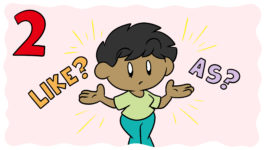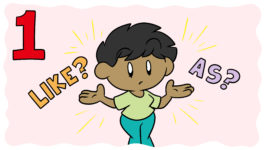Do you like conventional writing advice? I love it. As an editor, I look to time-tested tricks of the trade to help me—and to help my clients—create powerful and meaningful stories. Many writers use these guidelines very successfully, some writers push those boundaries purely for shock value (to questionable success), and others turn these “rules” on their heads and create something so nuanced and brilliant that I’m left wondering how they did it.
I recently encountered the latter in the opening pages of Louise Penny’s A Rule Against Murder. Her prologue defies several contemporary ideas about what makes a powerful and effective hook, but I found it gripping nonetheless.
Let’s break it down together and see how she did it.
Redefining the hook
The hook is defined in terms of a first line, paragraph, or page that immediately grips readers.Click To TweetPenny’s hook is the entire prologue. A short and punchy hook is often preferred because of its power to instantly grab readers and get them committed to the story. But in this prologue, Penny uses perfectly timed words, phrases, imagery, etc. as a sort of progressive hook, reeling us in a little at a time instead of in one quick jerk. Her first sentence feels decidedly unimpressive to me, but read one or two more—can you feel a tug on the line?
More than a century ago the Robber Barons discovered Lac Massawippi. They came with purpose from Montreal, Boston, New York, and burrowing deep into the Canadian wilderness they built the great lodge. Though, of course, they didn’t actually dirty their own hands. What clung to them was something else entirely. No, these men hired men with names like Zoétique, Télesphore and Honoré to hack down the massive and ancient forests.
Don’t you want to know about these Robber Barons? What can they possibly have to do with a murder that takes place a hundred years later? Why should we care about the construction of this lodge when it only serves as the setting for the murder?
But I have to keep reading, I need to know … how about you?
Going back in time to set the scene
Here’s another piece of sound writing advice: Keep moving forward, don’t slow down the plot by spending unnecessary time in the past. Have you heard that one? It’s one I tend to subscribe to, but Penny deliberately goes back in time. She sends us back a century to watch the construction of the lodge, the site of this future murder, through the eyes of characters who have no clear bearing on the rest of the plot! But I can’t really bring myself to care or to fault her for it because the effect sets such an eerie and powerful scene. It suggests a scope to this impending murder that would otherwise be lost.
Looking back the more intuitive among [the builders] noticed that what they’d created looked a little like a forest itself, but one turned unnaturally on its side.
For there was something unnatural about the Manoir Bellechasse from the very beginning … it commanded Lac Massawippi, as the Robber Barons commanded everything. These captains of industry couldn’t seem to help it.
Can you see it? This once-abandoned lodge deep in the woods: unnatural, commanding, a forest turned on its side: a perfect setting for murder.
Focusing on the villain rather than the protagonist
One of the central ways to get readers to commit to a story is to introduce them to the protagonist as early on as possible. We often think of the hook as this introduction, the place where we get to see the protagonist’s daily life just before the storm of the plot hits them and launches them into their journey. Not so in Penny’s prologue. There’s no mention of the protagonist; none of the main characters are there, in fact—they haven’t even been born yet. What is present is the spirit of the villain.
Once a year men with names like Andrew and Douglas and Charles would leave their rail and whiskey empires … they’d grown weary of robbery and needed another distraction.
The Manoir Bellechasse was created and conceived to allow these men to do one thing. Kill.
It made a nice change.
Over the years the wilderness receded … all the wild creatures hunted by the Robber Barons crept away.
These Robber Barons may not be to blame for the main crime of the story, but their spirit inhabits this place, this site of the impending murder. They first brought death to the Manoir Bellechasse, and Penny makes us feel their legacy lingering and festering, like the buried resentments that so often give rise to murder.
Delaying the story problem in favor of laying a foundation
Stating the story problem is another powerful feature of a strong hook. If you can give readers a glimpse of the seed at the heart of the book, show them in some small way what this book is about, they’re ready to dive in. In place of the story problem, though, Penny’s opening lays a foundation for what’s to come.
The last [builder] stood on the magnificent copper roof like a lightning rod … from a height he’d never achieve again. And if that man’s eyes could see far enough he’d make out something horrible approaching, like the veins of summer lightning. Marching toward not merely the lodge, but the exact place he stood, on the gleaming metal roof. Something dreadful was going to happen on that very spot.
At this point, I don’t know who is going to die or who is going to investigate the death. I don’t know what the stakes are. But I can feel it, coming toward me from the pages of the book, like the man on that roof looking out into the distance. I want to turn the page, how about you?
Using tension to drive the whole thing forward
To sum up this whole prologue in one word: tension. It’s tension from beginning to end that makes this unconventional opening work. It’s laced in the words and phrases of every paragraph, the scope and mood of this woodland setting, the promise of impending murder.
As the fortunes of its creators waned, so went the lodge. It sat abandoned for many years … Just as the forest was emboldened enough to reclaim its own, someone bought the place … The Manoir Bellechasse became one of the finest auberges in Quebec.
But while in over a century Lac Massawippi had changed, Quebec had changed, Canada had changed, almost everything had changed, one thing hadn’t.
The Robber Barons were back. They’d come to the Manoir Bellechasse once again, to kill.
As the story goes on, we become much better acquainted with the Manoir Bellechasse. It’s a beautiful and idyllic place run by a caring and utterly dedicated staff. But we can’t for one minute forget what we’ve seen lurking beneath the surface, thanks to Penny’s masterful prologue. We know better; we know the stage is set for murder.
Using unconventional hooks: Breaking out of the box of conventional wisdom takes great courage.Click To TweetBreaking out of the box of conventional wisdom takes great courage. Sometimes it doesn’t serve you—it might take your story into unhelpful territory. But if you’ve got a stellar idea that you know in your gut is right for your book, even if it doesn’t conform to so-called writing rules, don’t be afraid to step into those unknown waters. I hope Louise Penny’s A Rule Against Murder has convinced you it’s worth a try!
What unconventional techniques have you used to write a successful hook? How has breaking out of the traditional mold taken your writing to the next level?






2 thoughts on “Can An Unconventional Hook Work For Your Story?”
TOTALLY DIFFERENT topic, but this kind of hook treatment seems exactly right for my book project which I already knew NEEDS a prologue that can intrigue readers into an area they probably know NOT A THING about!!
I’ve been trying to create a hook paragraph — thinking of the whole prologue as a hook? That seems right now like the solution for me.
I shall have to read entire prologue of the book cited.
Thank you!
Hi Maggy,
I’m so glad you found this article helpful in thinking about your own hook. I like your idea of using the prologue as a hook and to impart background information to readers. I hope you will go and read Louise Penny’s full prologue; I think it’s excellent. Best of luck with your writing!